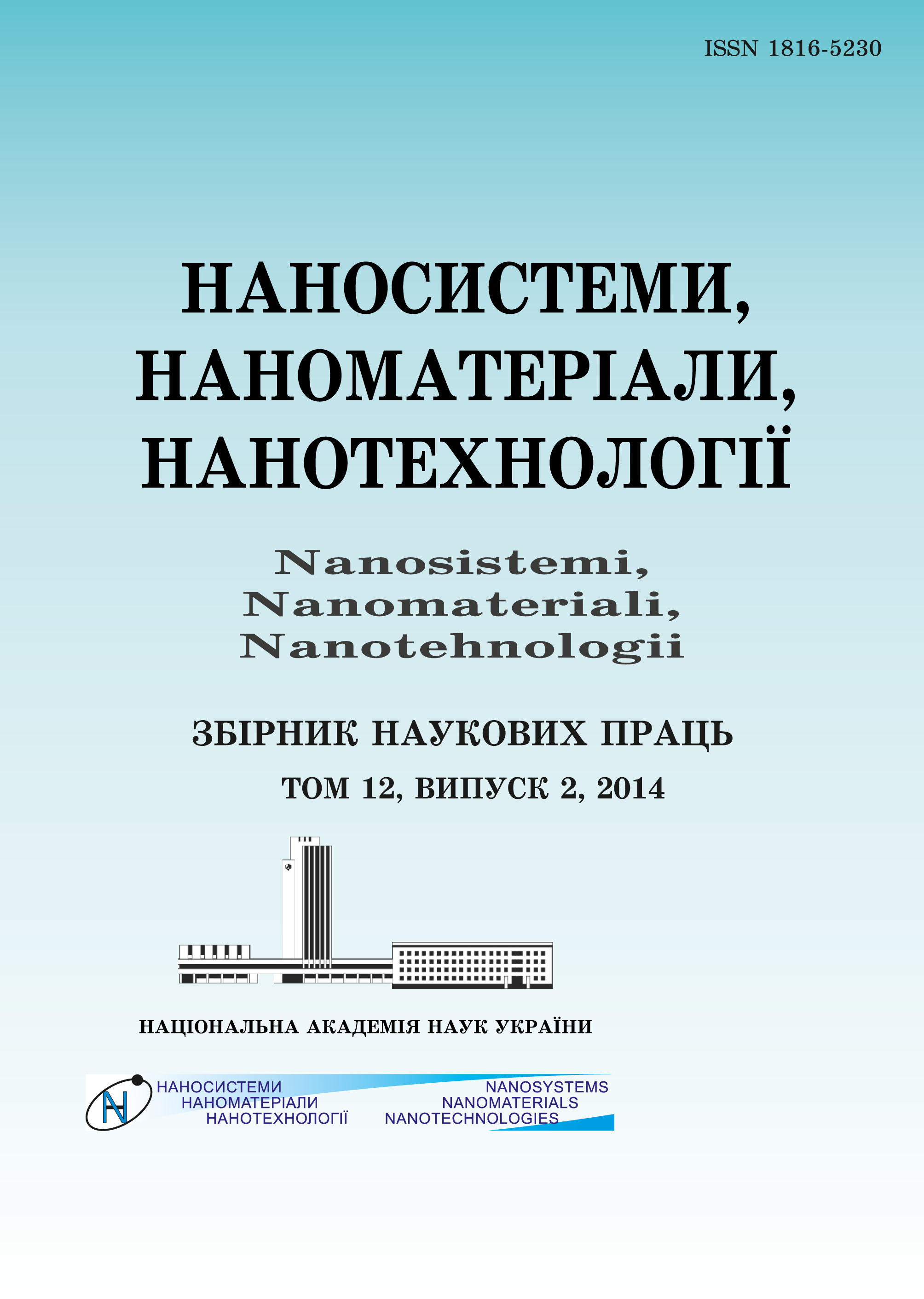|
|
|||||||||

|
Year 2025 Volume 23, Issue 1 |
|
|||||||
|
|||||||||
Issues/2025/vol. 23 /issue 1 |
|
V. FITIO, S. HOLYBORODA, and І. YAREMCHUK
Field Enhancement on the Dielectric-Grating Surface due to Resonant Interaction with a Plane Wave
79–88 (2025)
PACS numbers: 42.25.Bs, 42.25.Fx, 42.50.Gy, 42.79.Dj, 42.79.Gn, 61.05.cm, 84.40.Az
The power of surface Raman scattering is determined by the strength of the electromagnetic field. The field strength can be enhanced under waveguide resonance, which occurs when a plane optical wave interacts with a dielectric grating on a dielectric substrate. The resonant interaction is possible, when the optical wavelength and the grating period are carefully matched for fixed parameters of the periodic structure. Studies are carried out to determine the parameters of the grating and the parameters of the dielectric substrate, which provide significant field enhancement at the surface of the grating. The studies are performed under the normal incidence of a plane wave of TE polarization only with a wavelength of 0.6328 µm. The grating period is approximated based on the waveguide-mode constant propagation. The approximate grating period is always slightly smaller than the resonant grating period, greatly facilitating the search for the period, at which the reflection coefficient equals to one. The value of the refined grating period is obtained using rigorous coupled-wavelength analysis (RCWA). At this period, 'full resonance' is achieved. The reflection coefficient from the grating equals to one, and the field on the grating is enhanced tens or hundreds of times. As shown, the substrate does not have to be completely homogeneous with a low refractive index, but can be a combination, namely, a thin layer of a low-refractive-index dielectric deposited to the main part of a high-refractive-index substrate. As found, reducing the refractive index of the substrate and reducing the modulation of the refractive index of the grating medium lead to an increase in the fields at the grating–homogeneous medium interfaces. This method can be used to obtain a field gain of 256 times the amplitude of the incident optical wave for structures, which can be realized in practice
KEY WORDS: dielectric grating, RCWA, waveguide resonance, grating reflection, field enhancement under resonance
DOI: https://doi.org/10.15407/nnn.23.01.0079
REFERENCES
- J. Langer, D. Jimenez de Aberasturi, J. Aizpurua, R. A. Alvarez-Puebla, B. Auguié, J. J. Baumberg, and L. M. Liz-Marzán, ACS Nano, 14, No. 1: (2019); https://doi.org/10.1021/acsnano.9b04224
- W. Wang, P. Ma, and D. Song, Luminescence, 37: 1822 (2022); https://doi.org/10.1002/bio.4383
- A. Yariv, Quantum Electronics (New York–London–Sydney–Toronto: John Wiley and Sons, Inc.–California Institute of Technology: 1975).
- Ch. H. Lee, T. Limei, and S. Singamaneni, ACS Appl. Mater. Interfaces, 2: 3429 (2010); https://doi.org/10.1021/am1009875
- S. Nie and S. R. Emory, Science, 275: 1102 (1997); https://doi.org/10.1126/science.275.5303.1102
- R. Wang, J. Ma, X. Dai, Y. Gao, C. Gu, and T. Jiang, Sensors and Actuators B: Chemical, 374: 132782 (2023); https://doi.org/10.1016/j.snb.2022.132782
- G. Quaranta, G. Basset, O. J. F. Martin, and B. Gallinet, Laser Photonics Rev., 12: 1800017 (2018); https://doi.org/10.1002/lpor.201800017
- S. Bellucci, O. Vernyhor, A. Bendziak, I. Yaremchuk, V. Fitio, and Y. Bobitski, Materials, 13: 1882 (2020); https://doi.org/10.3390/ma13081882
- V. M. Fitio and Y. V. Bobitski, J. Opt. A: Pure Appl. Opt., 6: 943 (2004); https://doi.org/10.1088/1464-4258/6/10/004
- V. Fitio, I. Yaremchuk, O. Vernyhor, and Ya. Bobitski, Applied Nanoscience, 8: 1015 (2018); https://doi.org/10.1007/s13204-018-0686-z
- S. S. Wang and R. Magnusson, Appl. Opt., 32: 2606 (1993); https://doi.org/10.1364/AO.32.002606
- V. M. Fitio, V. V. Romakh, and Y. V. Bobitski, Semiconductor Physics, Quantum Electronics & Optoelectronics, 19: 28 (2016); https://doi.org/10.15407/spqeo19.01.028
- B. J. Civiletti, A. Lakhtakia, and P. B. Monk, Journal of Computational and Applied Mathematics, 368: 112478 (2020); https://doi.org/10.1016/j.cam.2019.112478
- V. M. Fitio, V. V. Romakh, L. V. Bartkiv, and Y. V. Bobitski, Materials Science & Engineering Technology [Materialwissenschaft und Werkstofftechnik], 47: 237 (2016); https://doi.org/10.1002/mawe.201600473
- T. Smirnova,V. Fitio, O. Sakhno, P. Yezhov, A. Bendziak, V. Hryn, and S. Bellucci, Nanomaterials, 10: 2114 (2020); https://doi.org/10.3390/nano10112114
- G. M. Karpov, V. V. Obukhovsky, T. N. Smirnova, and V. V. Lemeshko, Opt. Commun., 174: 391 (2000); https://doi.org/10.1016/s0030-4018(99)00712-9
 This article is licensed under the Creative Commons Attribution-NoDerivatives 4.0 International License ©2003 NANOSISTEMI, NANOMATERIALI, NANOTEHNOLOGII G. V. Kurdyumov Institute for Metal Physics of the National Academy of Sciences of Ukraine. E-mail: tatar@imp.kiev.ua Phones and address of the editorial office About the collection User agreement |